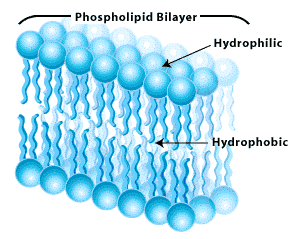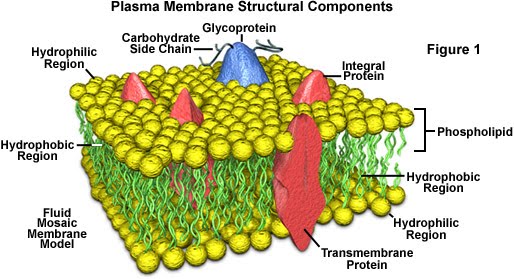Armed with the knowledge of lipids, as well as carbohydrates and proteins, we can now explore the structure of plasma membranes, specifically in the context of the fluid-mosaic model. Phospholipids have a hydrophilic (water loving) head, and hydrophobic (water repelling) tails. This results in the formation of a phospholipid bilayer (double layer), which forms the basis for the plasma membrane.

The name of fluid-mosaic model comes from:
Fluid = the arrangement of proteins contained in the membrane is always changing
Mosaic = the proteins present are spread around in a mosaic-like fashion.

It’s pretty isn’t it? The proteins are crucial to cell communication as well as the selective permeability of the membrane. The glycoprotein (sugars/carbohydrates attached to a protein) side chains act as receptors. The layer of glycoproteins and polysaccharides on the surface of plasma membrane is termed…
